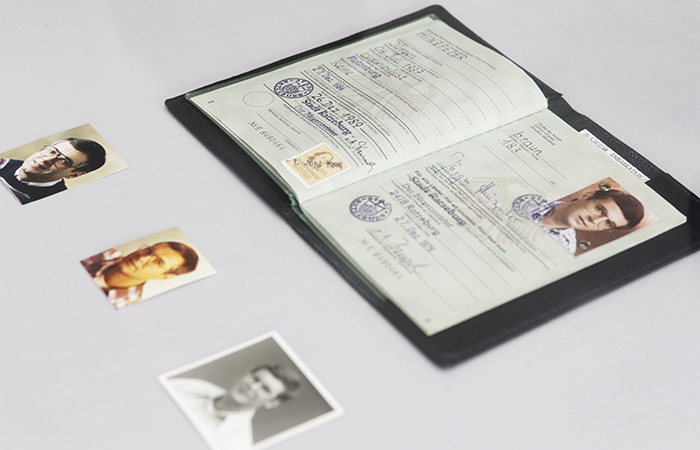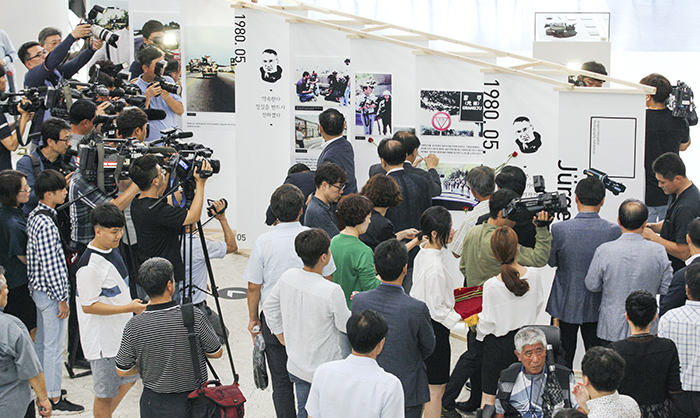
An exhibit to commemorate Jürgen Hinzpeter (1937-2016), the late German reporter who told the world about the May 18 Democratic Uprising in Gwangju in 1980, opens at the Gwangju Metropolitan City Hall on Aug. 21. One of Hinzpeter's old passports and some I.D. photos are on display.
By Min Yea-Ji and Lee Hana
Photos = Gwangju Metropolitan City
"A Taxi Driver" (택시운전사), a film based on events surrounding the Gwangju democracy movement of 1980, has attracted more than 10 million viewers since its opening, drawing more attention to the life of Jürgen Hinzpeter, the film's real-world German protagonist.
On Aug. 21, an exhibit opened at Gwangju Metropolitan City Hall to commemorate the late German reporter. Titled "Gwangju's Truth, as Told by Jürgen Hinzpeter," the exhibit will run until Sept. 3.
On display are photographs and videos of the May 18 Democratic Uprising in Gwangju taken by Hinzpeter in 1980, as well as a collection of his personal items, including a pair of glasses, a passport and some old I.D. photos.

An exhibit to commemorate Jürgen Hinzpeter opens at Gwangju Metropolitan City Hall on Aug. 21.
"We organized this event to pay tribute to Hinzpeter, a journalist who, at the risk of losing his own life, filmed the democratic uprising some 37 years ago and helped to spread the truth about the events that unfolded inside the walls of our city gates," said Mayor of Gwangju Yoon Janghyun.
At the time, Hinzpeter was a cameraman for the German broadcaster ARD-NDR stationed in Japan. He made his way to Gwangju to film the bloodshed of the May 18 Democratic Uprising. Thanks to his coverage, news of the movement became known in the Western world.
It is said that Hinzpeter, who passed away in Ratzeburg, Germany, in January last year, often talked about wanting to be buried in Gwangju. After his death, strands of his hair and clippings of his nails were enshrined at the 5.18 Cemetery in Gwangju in May 2016.
jesimin@korea.kr